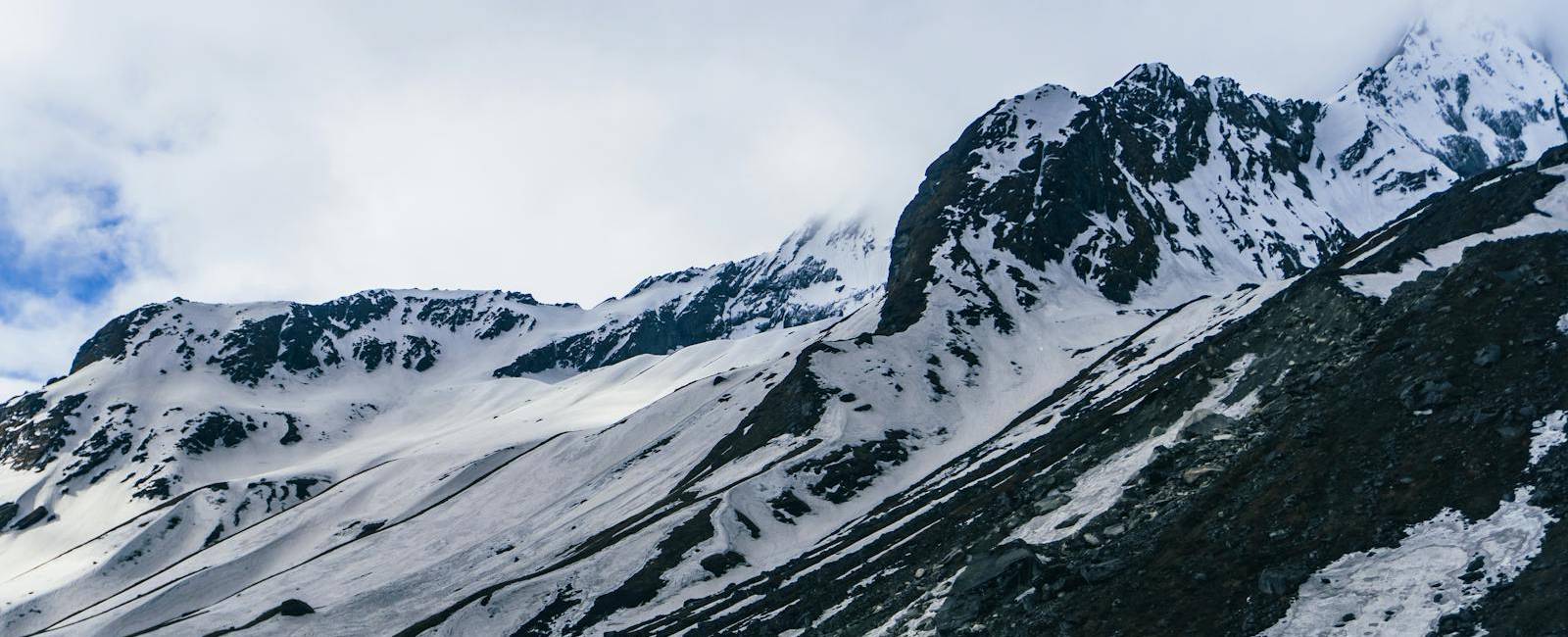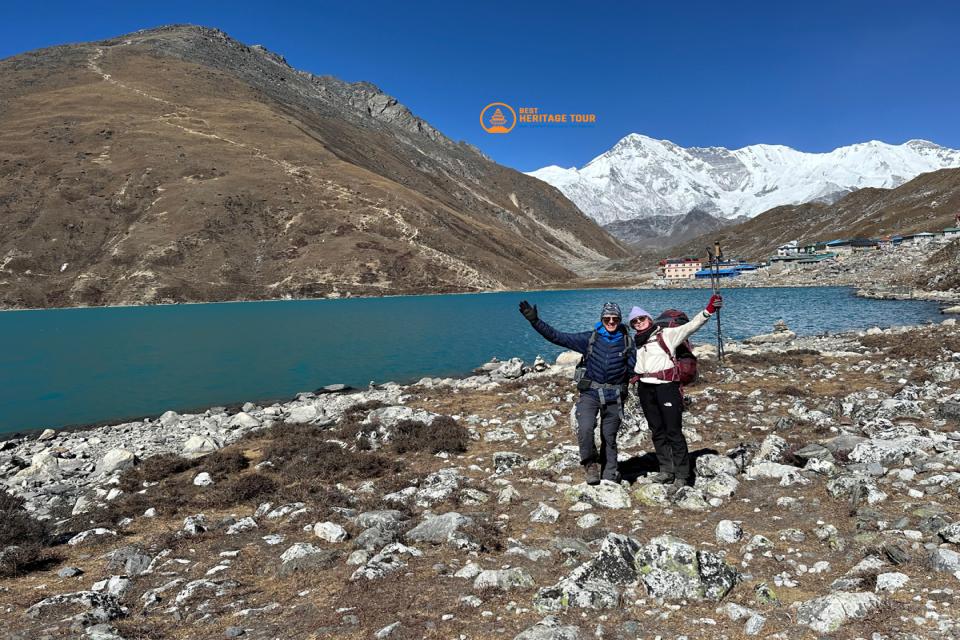Nestled high in the Everest region of Nepal, Gokyo Lake is a pristine, turquoise jewel that mesmerizes every traveler who ventures off the traditional Everest Base Camp trail. Set amidst the dramatic backdrop of the world’s highest peaks - including Mount Everest, Lhotse, Cho Oyu, and Makalu - the lake isn’t just a natural wonder; it’s a spiritual sanctuary, a high-altitude ecological treasure, and one of the most beautiful trekking destinations in the Himalayas.
While most trekkers dream of the Everest Base Camp, those who make the slight detour to Gokyo are rewarded with a more peaceful, equally breathtaking experience. In this blog, we explore everything you need to know about Gokyo Lake - from its geography and myths to its environmental importance and trekking highlights.
Where is Gokyo Lake Located?
Gokyo Lake is located in the Solukhumbu District of eastern Nepal, within Sagarmatha National Park, a UNESCO World Heritage Site. The lake lies at an elevation of approximately 4,790 meters (15,715 feet) above sea level, making it one of the highest freshwater lake systems in the world.
It is situated west of the traditional Everest Base Camp (EBC) route. Trekkers often reach it by taking a detour from Namche Bazaar via Dole and Machhermo, eventually rejoining the EBC route through the Cho La Pass (5,420 m).
The Gokyo Lakes System: A Series of High-Altitude Lakes
What many people don’t realize is that Gokyo Lake is not a single body of water - its part of a complex system of six main glacial lakes, collectively known as the Gokyo Lakes. These lakes are:
-
Thonak Cho (Fourth Lake) - Largest of the system (~65.07 ha)
-
Gokyo Cho (Third Lake) - Most popular and the one beside Gokyo Village
-
Tanjung Cho (Fifth Lake) - Offers breathtaking views of Everest
-
Ngozumpa Cho (First Lake)
-
Taujung Cho (Second Lake)
-
Longpongo (Sixth Lake)
The lakes are fed primarily by glacial meltwater, especially from the Ngozumpa Glacier, which is the longest glacier in Nepal and lies just above Gokyo.
Spiritual and Cultural Significance
Gokyo Lake is considered sacred by both Hindus and Buddhists. During Janai Purnima, a full moon festival in August, hundreds of pilgrims trek to this remote highland to bathe in the icy waters, believing that it will purify their sins and bring spiritual blessings.
A small temple of Lord Vishnu and Shiva stands on the western bank of the lake, and local Sherpas believe the lake to be the abode of Nag Devata, the serpent deity. The entire area exudes an atmosphere of peaceful reverence and spiritual isolation, untouched by the buzz of commercial tourism.
Trekking to Gokyo Lake
While Gokyo Lake is remote, it is accessible by foot via some of the most scenic and less crowded trails in the Khumbu region. Trekkers can reach Gokyo as part of various trekking combinations:
1. Gokyo Valley Trek
-
Starts from Lukla via Namche Bazaar
-
Passes through Dole and Machhermo
-
Reaches Gokyo Village, beside the third lake
-
Ascend to Gokyo Ri (5,360 m) for a panoramic view of Everest, Cho Oyu, Lhotse, and Makalu
2. Everest Base Camp via Gokyo Lake (EBC with Gokyo Lake)
-
More adventurous and circular route
-
Crosses the Cho La Pass (5,420 m) to join the traditional EBC trail
-
Combines the thrill of Gokyo with the prestige of Everest Base Camp
Gokyo Ri: The Best Viewpoint in Everest Region
Just above the Gokyo Lake lies Gokyo Ri, a rocky ridge that rises to 5,360 meters. Trekkers often climb it early in the morning to witness a sunrise view over the Everest massif. In clear weather, the panoramic vista from Gokyo Ri is unmatched - even better than what you get from Kala Patthar near Everest Base Camp.
From the summit, you can see:
-
Mount Everest (8,848 m)
-
Mount Makalu (8,481 m)
-
Mount Lhotse (8,516 m)
-
Mount Cho Oyu (8,188 m)
-
The massive Ngozumpa Glacier
-
All six Gokyo Lakes
Environmental Importance of Gokyo Lakes
Recognized as a Ramsar Site in 2007, the Gokyo Lakes are of international ecological importance. The high-altitude wetland supports rare species like:
-
Snow leopard
-
Himalayan tahr
-
Himalayan monal (national bird of Nepal)
The lakes also serve as a critical freshwater reservoir for downstream communities. Because of their elevation and unique ecosystem, Gokyo Lakes are extremely sensitive to climate change. In recent years, there has been concern over glacial lake outburst floods (GLOFs) due to the melting of glaciers feeding these lakes.
When is the Best Time to Visit Gokyo Lake?
The best time to trek to Gokyo Lake is during:
-
Spring (March to May) - Blooming rhododendrons, warmer days
-
Autumn (September to November) - Clear skies, excellent mountain visibility
During winter (December to February), Gokyo receives heavy snow and the lakes often freeze. While beautiful, trekking becomes more challenging and many teahouses close. Monsoon (June to August) is not recommended due to leeches, muddy trails, and poor visibility.
Accommodation & Facilities at Gokyo
The main settlement is Gokyo Village, perched beside the third lake, Gokyo Cho. It has a few well-maintained teahouses that offer:
-
Cozy rooms with shared bathrooms
-
Dining halls with yak-dung-heated stoves
-
Simple menus with Nepali, Tibetan, and continental food
-
Solar charging and limited Wi-Fi access (extra cost)
Due to the high altitude and remoteness, facilities are basic but sufficient. Trekkers are advised to carry:
-
Water purification tablets or filters
-
Altitude sickness medication
-
Warm sleeping bag and layers
Is Gokyo Lake Trek Difficult?
The Gokyo Lake trek is considered moderate to challenging, depending on your chosen route. There are no technical climbs, but the high altitude makes acclimatization crucial.
The trek becomes more demanding if you:
-
Cross Cho La Pass
-
Include Everest Base Camp
-
Attempt sunrise climb to Gokyo Ri
However, with good preparation, even first-time trekkers with decent fitness can complete the Gokyo Lake trek.
Permits Required for Gokyo Lake Trek
To enter the Gokyo region, you’ll need the following permits:
-
Sagarmatha National Park Entry Permit - NPR 3,000 (approx. USD 25)
-
Khumbu Pasang Lhamu Rural Municipality Permit - NPR 2,000 (approx. USD 17)
-
TIMS Card (if applicable) - NPR 1,000 for group trekkers
All permits can be arranged through your trekking agency or obtained in Kathmandu or Lukla.
Why Visit Gokyo Lake Instead of - or with - Everest Base Camp?
If you’re deciding between Gokyo Lake and Everest Base Camp, or planning to combine both, here’s what sets Gokyo apart:
Gokyo Lake Pros
-
Less crowded trails
-
More diverse natural scenery (lakes + glacier + peaks)
-
Better panoramic views (Gokyo Ri)
-
Culturally immersive
Everest Base Camp Pros
-
Prestige and recognition
-
Closer view of Khumbu Icefall and Everest
-
Connection with mountaineering history
Combining both via Cho La Pass gives you the best of both worlds and is highly recommended for adventurous trekkers.
Conclusion
Gokyo Lake is more than just a side trip from the Everest Base Camp trail - it’s a destination in its own right. Whether you're a nature enthusiast, spiritual seeker, photographer, or seasoned trekker, this high-altitude wonderland offers serenity, grandeur, and a raw Himalayan experience that few other places can match.
If you’re considering the trek, Best Heritage Tour offers expertly guided trips to Everest Base Camp via Gokyo Lake, combining comfort, safety, and deep local knowledge.
Contact Best Heritage Tour Today
Website: www.bestheritagetour.com
Email: info@bestheritagetour.com / bestheritagetour@gmail.com
Phone/WhatsApp: +977-9851149197
Office: Thamel Marg, Kathmandu, Nepal
Discover the serene beauty and towering peaks of Gokyo Lake - an unforgettable Himalayan treasure waiting to be explored.
Author: Best Heritage Tour
Date: 1st August, 2025


